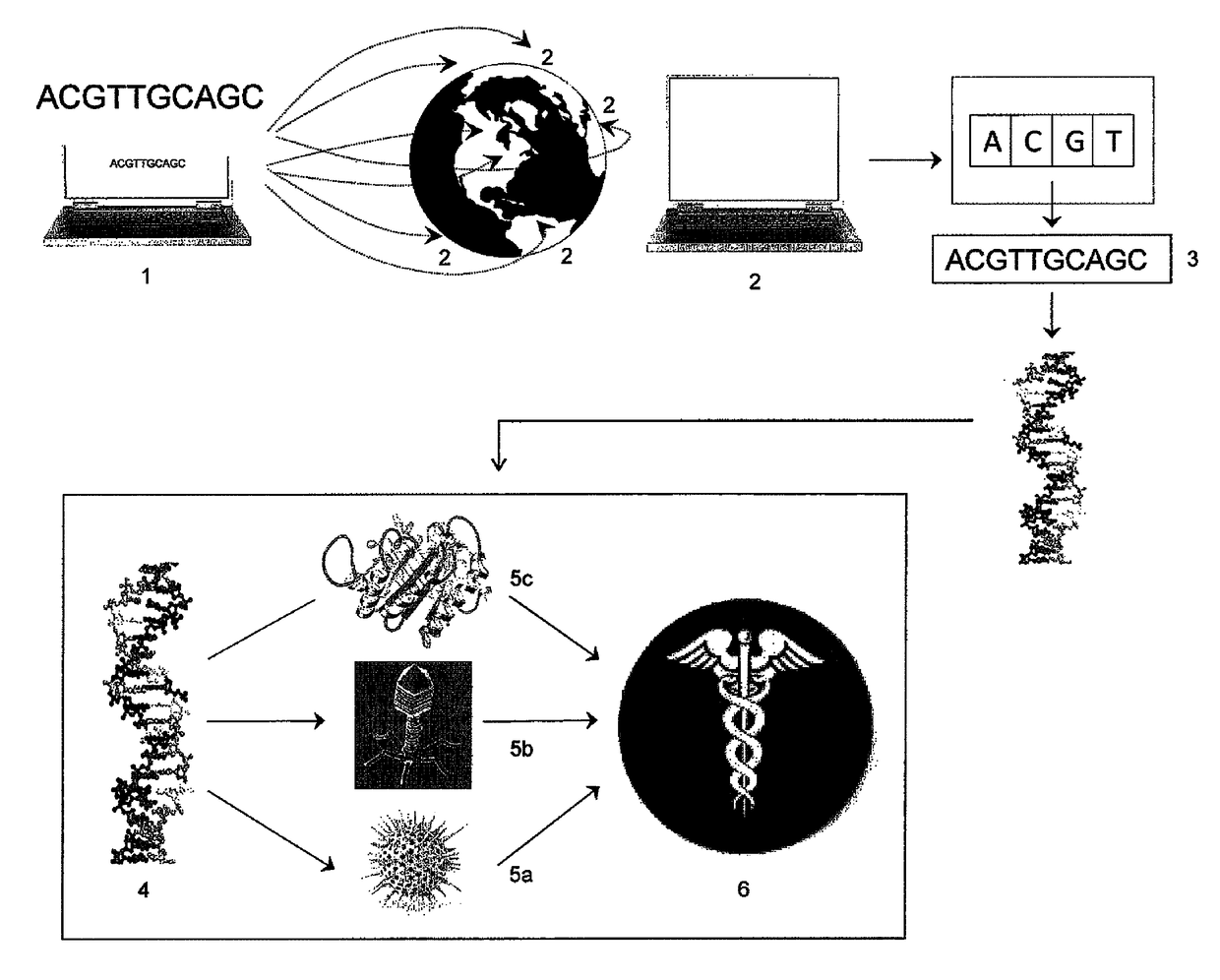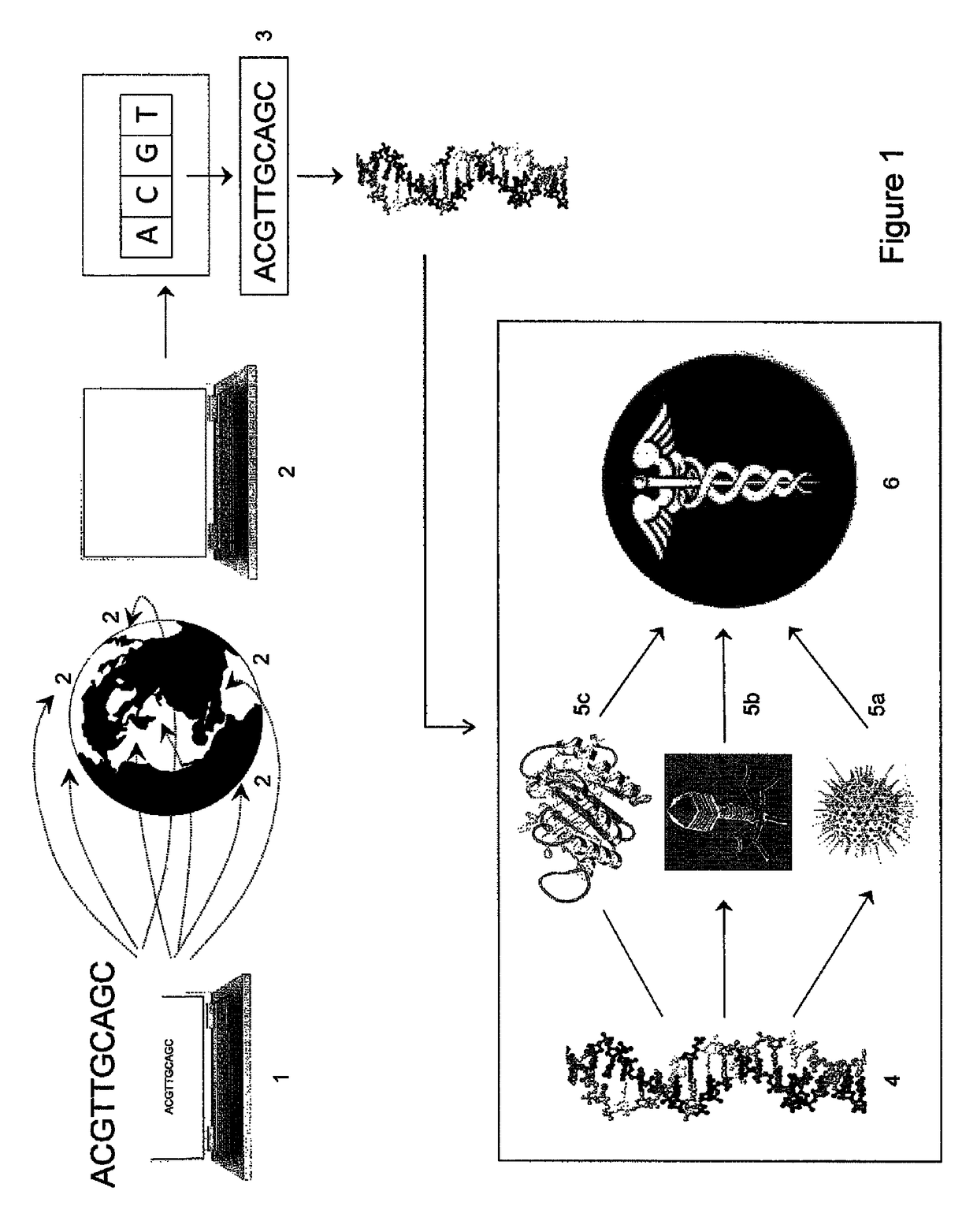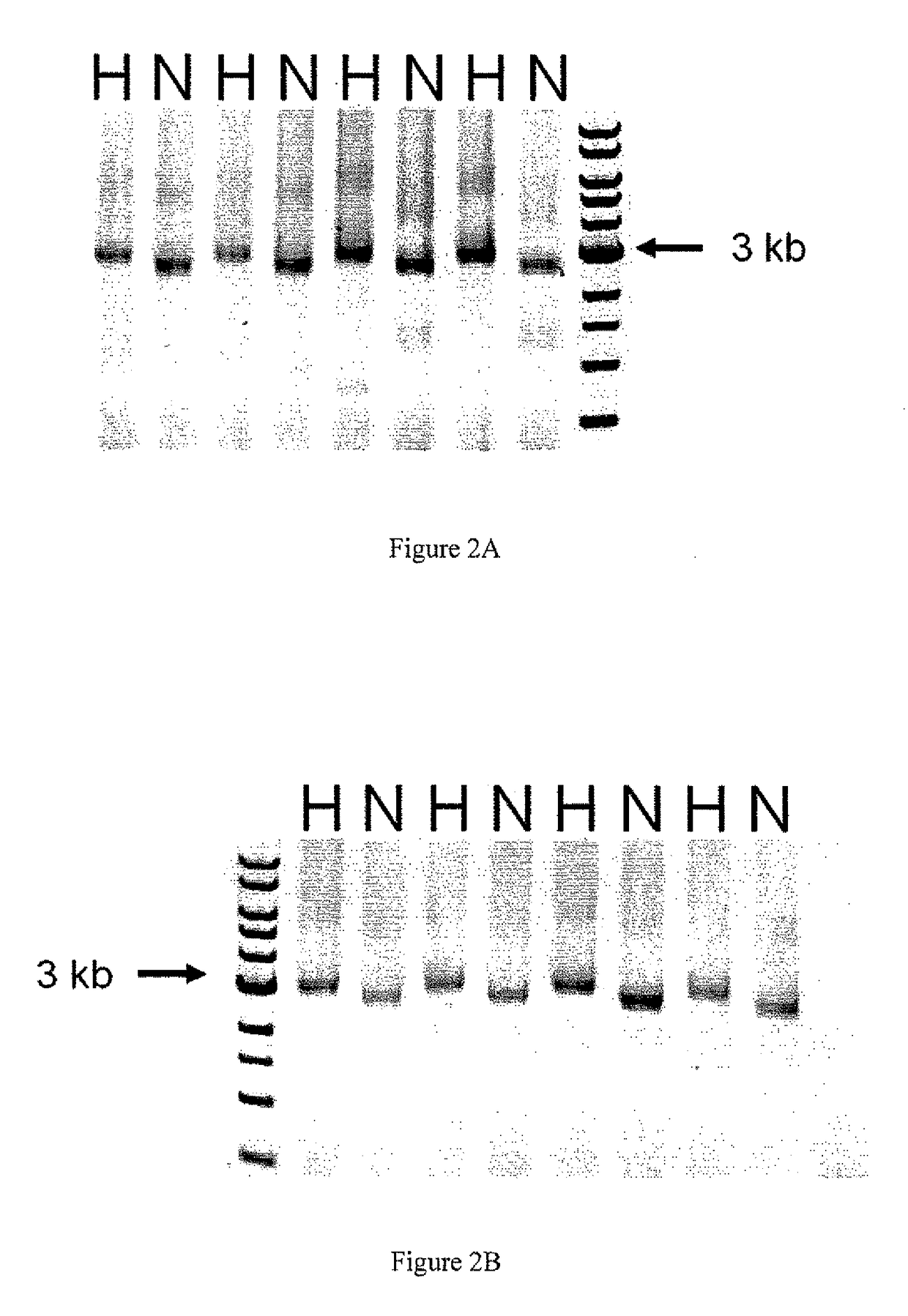Digital to biological converter
a technology of biological information and converter, applied in the field of digital to, can solve the problems of insufficient vaccine quantity, inability to meet the requirements of vaccine production, etc., and achieve the effect of rapid respons
- Summary
- Abstract
- Description
- Claims
- Application Information
AI Technical Summary
Benefits of technology
Problems solved by technology
Method used
Image
Examples
example 1
of a Functional HA and NA DNA Molecules and Protein Moieties
[0066]This example illustrates the automated assembly of DNA constructs of HA and NA genes from an oligonucleotide pool and their transfection into a host cell that produces viral particles. Influenza viruses are made of a viral envelope containing glycoproteins wrapped around a central core. The central core contains the viral RNA genome and other viral proteins that package and protect the RNA. The influenza genome typically contains eight pieces of RNA with each containing one or two genes encoding viral proteins. In the case of influenza A, the genome contains 11 genes on eight pieces of RNA, encoding for 11 proteins, including hemagglutinin (HA) and neuraminidase (NA). Other proteins include nucleoprotein (NP), M1, M2, NS1, NS2, PA, PB1, PB1-F2 and PB2.
[0067]Hemagglutinin (HA) and neuraminidase (NA) are glycoproteins present on the outside of the viral particles. These glycoproteins have key functions in the life cycle...
example 2
n of Immunological Response
[0106]In a further experiment sequences were synthesized in a manner as described in Example 1 for the influenza A / Shanghai / 2 / 2013 HA gene. The synthetic HA sequences were cloned into a DNA template containing RNA-dependent RNA polymerase genes, genetic control elements, and a T7 polymerase promoter according to previously described self-amplifying RNA vaccine technology (Geall et al., Nonviral delivery of self-amplifying RNA vaccines, PNAS, Vol. 109, No. 36, pp. 14604-09 (2012)). After verification of the construct in vitro transcription of the RNA, capping of the RNA, and transfection of BHK cells with the RNA was carried out. The integrity of the transcribed RNA was demonstrated by agarose gel electrophoresis (not shown). The cells expressed the H7 HA, as demonstrated by gel electrophoresis and Western blot with an H7-specific antibody. The RNA was encapsulated in a lipid nanoparticle (LNP) delivery system and the vaccine was used to immunize mice (Geal...
example 3
of a Functional Phage Particle and Oligonucleotide Design
[0107]The present invention can be applied to the production of a phage, which can be useful in phage therapy. In one embodiment the phage is a bacteriophage. Phage therapy is useful for the treatment of pathogenic bacterial infections, in humans, animals, and plants. Phage therapy can be particularly useful in applications where the bacteria does not respond to convention methods of control.
[0108]The 5,386 bp PhiX DNA biological sequence is entered into a transmitting unit of the invention using ARCHETYPE® software (Synthetic Genomics, Inc., San Diego, Calif.) (Ref. Seq: NC_001422, sequence below) at a laboratory. The software divides the sequence into four overlapping fragments of about 1.4 kb each (sub-assemblies of the PhiX genome sequence). Each fragment overlaps the next by 40 bp to form a circular molecule when assembled. Each of the four fragments is further divided into 43-45 overlapping oligonucleotides. These oligon...
PUM
| Property | Measurement | Unit |
|---|---|---|
| temperature | aaaaa | aaaaa |
| temperature | aaaaa | aaaaa |
| temperature | aaaaa | aaaaa |
Abstract
Description
Claims
Application Information
 Login to View More
Login to View More - R&D
- Intellectual Property
- Life Sciences
- Materials
- Tech Scout
- Unparalleled Data Quality
- Higher Quality Content
- 60% Fewer Hallucinations
Browse by: Latest US Patents, China's latest patents, Technical Efficacy Thesaurus, Application Domain, Technology Topic, Popular Technical Reports.
© 2025 PatSnap. All rights reserved.Legal|Privacy policy|Modern Slavery Act Transparency Statement|Sitemap|About US| Contact US: help@patsnap.com



